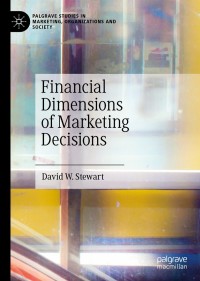Question
PLEASE ANSWER PART 7 ONLY You work for a consulting firm. The University of Exeter (UE) has just hired your team to make recommendations on
PLEASE ANSWER PART 7 ONLY
You work for a consulting firm. The University of Exeter (UE) has just hired your team to make recommendations on the composition of its endowment fund. UE is considering investing in a broad selection of risky assets, ranging from bonds to cryptocurrencies. As a proxy for the different asset categories, you decide to use appropriate ETFs and investment trusts. These include: iShares Core FTSE 100 ETF (ISF.L) iShares Core MSCI Total International Stock ETF (IXUS) Vanguard Total Bond Market Index Fund ETF Shares (BND) Vanguard S&P 500 ETF (VOO) iShares U.S. Real Estate ETF (IYR) Grayscale Bitcoin Trust (GBTC) Due to the pandemic, UE has been relying more and more heavily on its endowment to meet budgets need in the past two years. After meeting with UEs Chief Financial Officer (CFO), your manager identified several issues to be addressed and asked you to conduct the analysis. In your analysis, assume the risk-free rate is 0% and ignore the effects of exchange rate fluctuations. Also assume that UEs position is large enough that trading fees and transaction costs are negligible. Do not include the risk-free asset in your recommendation because UEs CFO is interested in the construction of the optimal risky portfolio, not the complete portfolio. Use historical monthly return from January 2016 to December 2019 to construct portfolios (note that you need prices on 1/1/2020 to calculate returns for December 2019). Use data from January 2020 to December 2021 to evaluation portfolio performance unless otherwise instructed (e.g., Q1).
1. From January 2016 to December 2019, UEs risky portfolio invested 50% in the bond market (proxied by BND), 30% in the global equity market (proxied by IXUS), and 20% in the U.K.s domestic equity market (proxied by ISF.L). Refer to this portfolio as P0 and assume that UEs asset allocation remained the same over this period. How well did P0 perform? Collect monthly historical data, calculate performance summary statistics, and compare these statistics with those of the S&P500 index (proxied by VOO) over the same period.
2. Do you recommend UE to expand its investment universe to include the U.S. equity market (proxied by VOO), real estate (proxied by IYR), and cryptocurrencies (proxied by GBTC)? Plot the efficient frontier using the three asset categories that UE already invested in. Compare it with the efficient frontier generated using all six asset categories UE is considering. Assume there are no trading restrictions.
3. Assume UE only rely on historical returns and there are no trading restrictions, how should UE form its risky portfolio? Refer to this portfolio as P1.
4. Assume UE is not allowed to short sell. How should UE construct its risky portfolio? Refer to this portfolio as P2. How costly is the short sale constraint?
5. The CFO is also considering managing the risky portfolio passively. After finding out the market capitalisation of each asset category, you determine that the weights for the passive portfolio are as follow: ISF: 1.23% IXUS: 32.27% BND: 40.98% VOO: 14.02% IYR: 11.23% GBTC: 0.27% Refer to this portfolio as P3. Use P3 to calculate the expected return of each asset category implied by the market, assuming that the market return is 0.6% per month. After examining the implied expected returns, you and your colleagues believe that some adjustments are necessary. Since central banks around the world are considering tightening money supply and raise interest rates, your team believes that the expected return for BND should be adjusted downward by 0.01% per month. You also believe that blockchain technology will quickly become more important, so the expected return for GBTC should be increased by 0.02% per month. Form an active portfolio that incorporate these views and refer to it as P4. Calculate the weights for P4.
6. A nonprofit organisation, UE is very concerned about its investment risk. The CFO wants to ensure that the standard deviation of the risky portfolios monthly return does not exceed 0.02, and the one-month 99% VaR does not exceed 4%. UE uses the variance-covariance method (with normality assumption) and data from 2015 to 2019 to estimate VaR. Construct the optimal risky portfolio under these constraints while assuming short sales are not allowed. Refer to this portfolio as P5 and calculate its weights.
7. Compare the performance of P1 ~ P5 using data from 2020 and 2021.
Step by Step Solution
There are 3 Steps involved in it
Step: 1

Get Instant Access to Expert-Tailored Solutions
See step-by-step solutions with expert insights and AI powered tools for academic success
Step: 2

Step: 3

Ace Your Homework with AI
Get the answers you need in no time with our AI-driven, step-by-step assistance
Get Started


